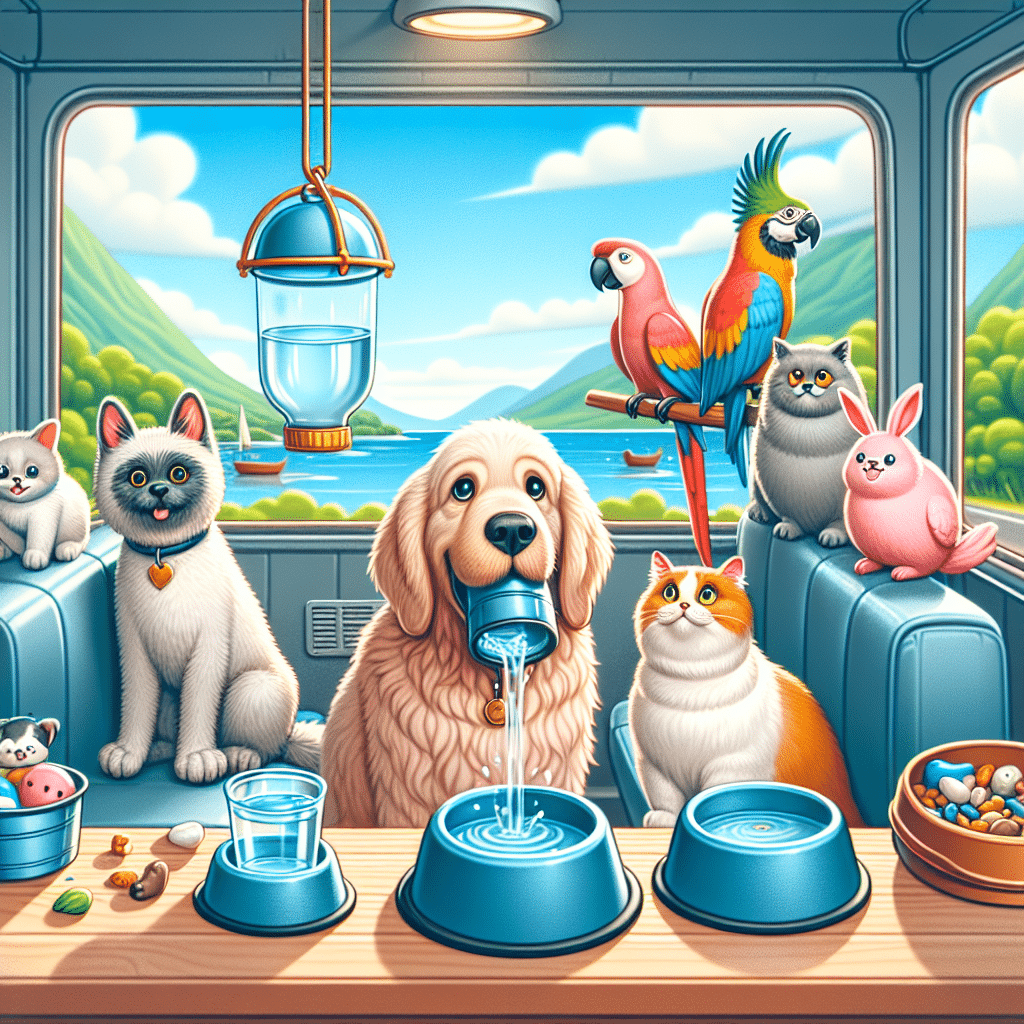Understanding the Importance of Hydration for Pets
Keeping pets hydrated on trips is crucial for their health and wellbeing. Animals, like humans, can suffer from dehydration, leading to serious health issues. Factors such as heat, travel stress, and changes in routine can increase their risk of dehydration. Being aware of the signs of dehydration, such as dry gums, lethargy, or loss of appetite, can help you take timely action to keep your furry companions well-hydrated.
Choosing the Right Water Containers
-
Travel Water Bowls: Lightweight, collapsible bowls are an excellent choice for travel. They can fit easily into bags or even pockets. Many are made of silicone, making them both durable and easy to clean.
-
Water Bottles with Dispensers: Pet-specific water bottles come with attached bowls for easy dispensing. These are perfect for on-the-go hydration, allowing you to provide a quick drink without spilling.
-
Self-Dispensing Water Bottles: These innovative water bottles drip water as pets drink, reducing waste and ensuring a constant supply. Choose one that’s leak-proof to avoid messes in your vehicle.
Hydration Aids
-
Ice Cubes: Bringing along ice cubes can be a fun and refreshing way for pets to hydrate. Many dogs enjoy chewing on ice cubes, and they can help keep the water cool.
-
Flavor-Infused Water: Adding low-sodium chicken broth or beef broth to your pet’s water can entice them to drink more. Just ensure it does not contain any harmful ingredients like onion or garlic.
-
Hydration Supplements: Consider carrying hydration powders or gels specifically designed for pets. These products are often more palatable and encourage water intake when mixed into regular drinking water.
Timing and Frequency of Water Breaks
During trips, make a schedule for regular water breaks. Aim to stop every 2-3 hours, especially on long journeys. This timing not only allows for bathroom breaks but ensures your pet has the chance to hydrate after being in a moving vehicle. Utilize these stops to stretch their legs and give them a chance to cool down, especially during hot weather.
Monitoring Temperature and Environment
-
Keep the Environment Cool: On hot days, ensure your vehicle is well-ventilated. Use air conditioning to keep the temperature comfortable for both you and your pet. Never leave pets in a locked car, as temperatures can soar quickly.
-
Hydrating on the Go: On outdoor adventures, consider strategic locations for hydration breaks. Natural water sources like rivers, ponds, or lakes can offer your pet a chance to drink and cool off. However, ensure the water is clean and safe for consumption.
Traveling with Cats
Cats may have different hydration needs than dogs, especially during travel. Here are some tailored tips for keeping felines hydrated:
-
Introduce Water-Friendly Products: Use cat water fountains that circulate water to entice drinking. These can be portable for travel and are excellent for picky drinkers.
-
Wet Food on the Go: Offering high-quality wet food can provide hydration along with nutrition. This can be especially effective if your cat is reluctant to drink water when stressed.
-
Regular Breaks: Plan frequent stops to allow your cat to relax, stretch, and access water. Cats appreciate consistent routines; design breaks that resemble home life.
Understand Your Pet’s Needs
Your pet’s breed, age, and health status can affect their hydration needs. Young, active dogs typically require more water than older or sedentary animals. Adjust your water supply based on their activity levels and temperature.
Use of Cooling Mats and Bandanas
-
Cooling Mats: These special mats can keep pets cool during travels, especially in hot climates. Ensure they have access to fresh water throughout the trip to complement the cooling effect.
-
Cooling Bandanas: A wet bandana around your pet’s neck can provide cooling relief and encourage water consumption, as they may naturally seek more hydration while feeling cooler.
Safety First
Always prioritize safety when managing hydration on trips. Carry ample water for both you and your pet, especially in remote areas where clean water sources may be scarce. A general rule is to bring about one ounce of water per pound of your pet’s body weight for a day.
Educate Yourself on Local Laws and Regulations
When traveling, be aware of local laws regarding pet ownership, including restrictions on pets in public areas or specific dog parks. Being informed can help you prepare and identify appropriate locations for hydration breaks.
Pet-Friendly Stops
Research pet-friendly cafes, parks, and rest areas beforehand, where you can take breaks and provide water for your pet. Some businesses offer designated pet drinking stations.
Utilizing Technology for Hydration
A variety of pet apps can remind you to take breaks or notify you when it’s time for hydration. Select apps that cater to pet care needs, providing helpful tips throughout your journey.
Planning for Emergencies
Even the best-planned trips can encounter unexpected scenarios. Carry a water supply along with an emergency pet hydration kit. This should include bottled water, extra food, and a basic pet first-aid kit.
Create Positive Associations
Reinforce positive drinking behaviors by rewarding your pet with treats or praise when they hydrate. This can help create a healthy habit of drinking regularly during travels.
Adjustments for Different Seasons
During summer, monitor hydration closely as pets are more prone to overheating. In winter, ensure water isn’t frozen and still remains accessible.
Conclusion
Keeping your pets hydrated on trips is not just about having water available—it’s about creating an environment that encourages drinking. By utilizing the right tools, maintaining cool temperatures, and making hydration a priority, you can ensure happy and healthy travels for you and your pets.
